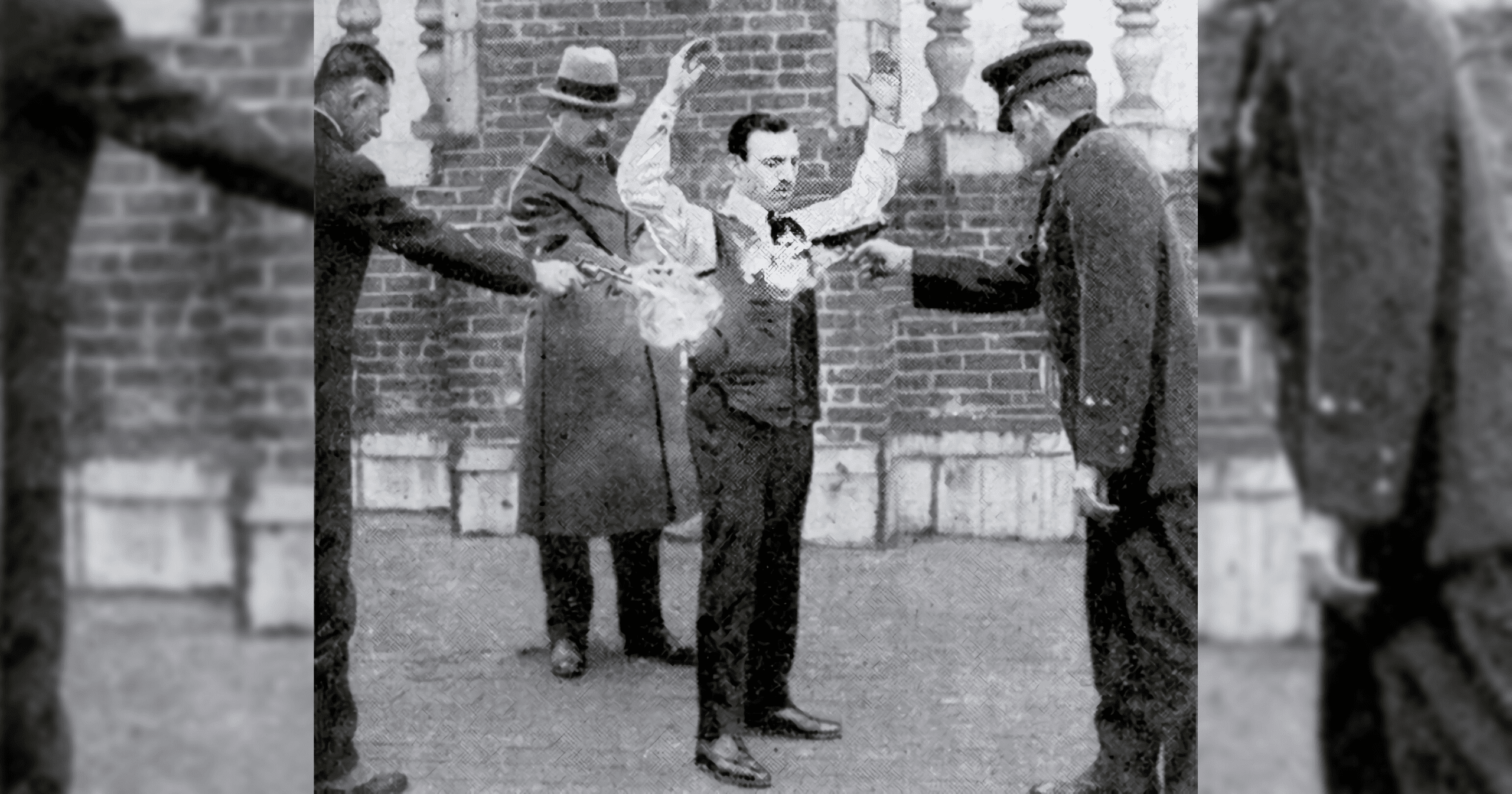In 1897, Father Casimir Zeglen was shot in Chicago – on purpose. Temporarily keeled over, he got up and raised his hands to show he survived unscathed much to the cheer of surprised spectators.
15 years ago prior, he began experimenting with hopes of making bulletproof cloth. He tried different combinations of steel shavings, moss, hair and other sorts of materials to no avail.
After the mayor of Chicago was assassinated in 1893, his efforts were renewed. Father Zeglen’s breakthrough came when he read a postmortem medical report in which a silk handkerchief significantly reduced a bullet’s penetration.
He needed a special way to weave the silk lest it be an immovable mat rather than a true fabric for clothing. Visiting weaving mills in Austria and Germany, he was able to produce a four-ply bulletproof vest there just an eight of an inch thick with the help of “Polish Edison” Jan Szczepanik.
Their new weave ended up saving the life of King Alfonso XIII of Spain, when a bomb exploded near his carriage but did no harm to him as it was covered in special armor made from the bulletproof fabric.
When Father Zeglen returned to the United States and offered a demonstration of the bulletproof vest, the occasion was recorded in the Brooklyn Eagle newspaper on Oct. 9, 1902.
Read below text from the Brooklyn Public Library:
THREE GRADES OF THE FABRIC
Police, Navy Yard and Militia Officers Invited to Local Test Arranged for To-morrow Night.
The Rev. Casimir Zeglen of St. Stanislaus’ Roman Catholic Church in Chicago, the largest Polish church in the country, there being 40,000 souls in the parish, has invented a bullet proof cloth which has stood the test of many shots of all calibers fired at all distances. Mr. Zeglen is a young priest, about 35 years of age. He began experimenting on bullet proof cloth fifteen years ago, using steel shavings, moss, hair, etc. but nothing stood the test until he made use of silk. All early experiments produced an inflexible cloth which was more in the nature of a coat of mail. After the assassination of Mayor Carter Harrison in Chicago Mr. Zeglen renewed his efforts to find a bullet proof material and determined to use silk. A problem, however, presented itself in securing perfection of weave, and this was not made possible until he visited Vienna and Aachen, in Germany, where there are great weaving mills, manned by Polaks, who are renowned for their skill in weaving.
A fabric produced there, which is one-eighth of an inch in thickness, four ply, presents this perfection of weave, and all efforts to penetrate it with bullets has proved futile. The Rev. Mr. Zeglen himself submitted to a test in Chicago. He put on a vest of the material and an expert revolver shot fired at the vest at eight paces and no one of the bullets at all disturbed Mr. Zeglen. The weight of the fabric is half a pound to the square foot. It is soft and flexible, so that all kinds of garments can be manufactured out of it. The most practical form of garment is a vest, which can be worn at all times as a protection to life. The second kind of fabric is a simple textile goods, being an inch thick and weighing two pounds to the square foot. This fabric resists and wards off all kinds of leaden bullets from military rifles at any distance, dum-dum bullets at a range of 400 yards and steel bullets at a distance of 800 yards. The third kind of fabric is also of silk, textile, one inch thick, covered on the outside with a steel armor one-sixteenth of an inch in thickness. The silk and steel together weigh four pounds to the square foot, and the armor wards off steel bullets from military rifles at a range of 250 yards. The same steel bullets can be warded off at a range of 200, 100 and 50 yards, but the steel armor must be increased to the thickness of one-tenth of an inch and at a range of 50 yards to one-eight of an inch.
Tests of this fabric have been made in a number of places, and they have all been successful. One of the most important was at Fort Sheridan. Krag-Jorgensen bullets were fired at a distance of 200 and 300 yards. At the 300-yard range the bullet perforated the steel and imbedded itself in the second thickness of the cloth. At the range of 200 yards the bullet pierced the entire shield, but the steel mantel of the bullet stopped at the third thickness. A test was made at Chelsea, Mass., before Chief of Police Hudson, who fired a shot at the vest seven paces away with a 44-caliber pistol, but the bullet failed to pierce the cloth.
C.W. Ryder, who is exhibiting the armor cloth in Brooklyn, has arranged for a test in the Montauk Theater building next Tuesday at 3:30 P.M., to which the police, Navy Yard officers, militia officers and others will be invited. A 22-caliber pistol, a 32-caliber revolver, and a 44-caliber Russian revolver, the largest made, will be fired. Smokeless powder will be used. Dr. Ashley A. Webber, who is known as one of the greatest marksmen in the country, will fire the shots. Mr. Ryder has made an offer of $500 reward if Dr. Webber succeeds in penetrating the fabric. It is expected that the Rev. Mr. Zeglen will be present in person to wear the vest.















[…] Sources: uCatholic | https://ucatholic.com/…/when-a-catholic-priest…/ […]